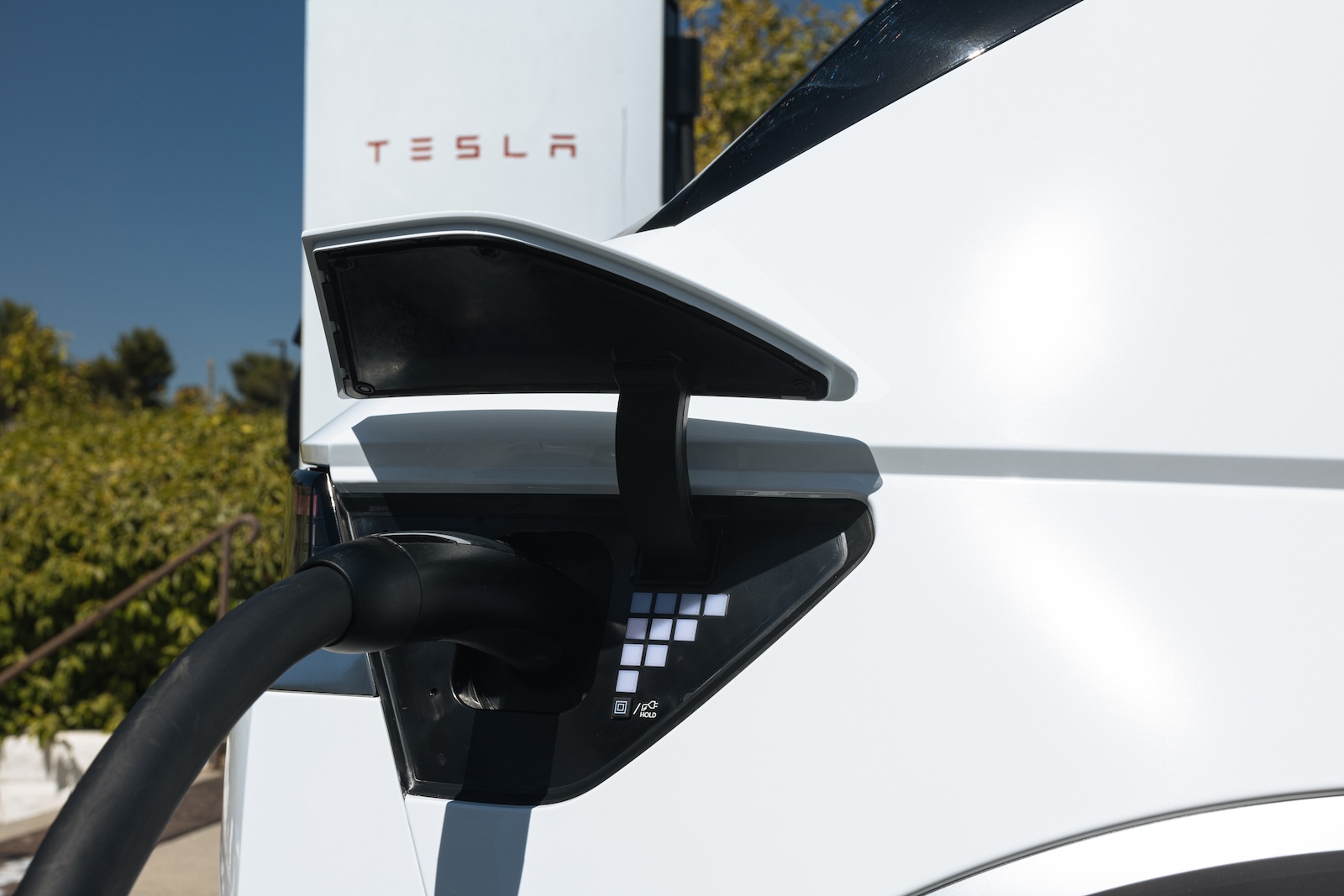Sign up for daily news updates from CleanTechnica on email. Or follow us on Google News!
A few days ago I went deep on cement again, using an assessment of the processes of American clean cement startups to define the scope and magnitude of the problem, the chemistry and energy requirements of cement, why fixing it is critically important, and incidentally evaluate a couple of companies’ offerings.
The CliffsNotes — FreeBookNotes in China is the closest approximation — of that deep dive is pretty straightforward. Limestone is incredibly cheap and widely spread because it’s dead shellfish and precipitated calcium ions from long vanished oceans. Deposits hundreds of square kilometers and a hundred or more meters deep are near or on the surface all over continents globally.
We quarry limestone cheaply because it’s a softer, sedimentary rock and exists almost everywhere we need cement, so transportation costs are low. We heat it in kilns to 900° Celsius to break down its chemistry and unlock the solid calcium oxide (quicklime or just lime in context) that we need to make cement. That process turns the remaining carbon and oxygen in limestone into carbon dioxide. About 56% of the limestone becomes lime and the other 44% becomes carbon dioxide. That’s a lot of carbon dioxide.
The heat requires energy for the limestone kiln. Then we put the lime into a clinker kiln, the horizontal rotating drum on cement plant properties, with some additives, and use more heat in the form of a huge jet of flame inside the drum to turn the mixture into a coarse ceramic — clinker. We grind the clinker into cement dust, put it in bags and ship it to where it’s needed. 60% to 70% of cement is the lime.
We make about 4.1 billion tons of cement annually, which turns into perhaps 40 billion tons of concrete. The carbon dioxide is about one for one with cement, so that’s about 4.1 billion tons of carbon dioxide, or 8% to 10% of all carbon dioxide we emit annually in the world. It’s a big climate problem.
Sublime Systems’ solution — full article with all the nerdy details, some of which I got wrong, here — is electrochemistry, the same class of chemistry that is used in all of our batteries, to make aluminum and to make the chemical that bleaches paper, among a lot of other things. The basics of electrochemistry are that if you have a positively and negatively charged electrode in a medium and you adjust the pH balance, you can do stuff that sometimes seems like alchemy. I was advisor to a CO2-based redox flow battery firm for a couple of years, and the PhD of electrochemistry, Elod Gyenge, regularly referred to it as the hardest form of chemical engineering. I’ve upped my knowledge of chemical engineering — not remotely competent to perform it — to the point where I at least have a reasonable idea why he’s absolutely correct to say so. It’s not nearly as hard as trying to get algae to do tricks for us consistently, but it’s up there.
Sublime electrolyzes water into oxygen and hydrogen. They play with the ionic composition and pH balance a bit. They crush any substance that contains lime, including limestone, electric arc furnace slag and concrete from demolition, into a powder. They combine the ionic solution and the powder and the magic of electrochemistry does the separation of lime and carbon dioxide, if there is any carbon in the substance, instead of 900° Celsius heat. That doesn’t mean energy requirements necessarily go down, because electrolyzing water for hydrogen is energy intensive too, but I wasn’t able to get to end of job on energy requirements.
The lime precipitates out. The carbon dioxide comes out at 10 atmospheres of pressure, cold and pure, so easily captured, although not easily or cheaply disposed of. The hydrogen comes out too, and once again, the ratio of hydrogen in this mix is something I haven’t fully explored, so it might be a economically viable amount, or it might be like the bleaching chemical process mention above, where the waste hydrogen is just too little daily and in the wrong place to be easily used.
The problem with Sublime is the sheer, absurd, mind-boggling scale of cement manufacturing. All of the slag from steel plants and all of the concrete from construction waste would only provide about 10% of global lime demand for cement. Only limestone is cheaply and easily extracted in convenient locations for the other 90%.
Other solutions pick different rocks, calcium silicates, which don’t have any carbon in them so don’t create carbon dioxide when run through kilns. We actually manufacture calcium silicates by the hundreds of millions and billions of tons in the manufacturing of cement, specifically the artificial alite and belite components. When lime is put into the clinker kiln, the additives from clay and other sources include the silicon, aluminum, and iron oxides required for their formation.
But naturally occurring calcium silicates are another matter. They are igneous and metamorphic rocks, unlike sedimentary limestone. That means that instead of being big shallow former sea beds, they cluster around places with lots of heat and pressure where continental plates have ground together historically and currently. Want a lot of them in the middle of the USA’s Great Plains or the vast northern European steppes, expect to ship massive tonnages of them a long way. They are also found much deeper usually, often from one to 30 kilometers, and are much harder. The combination means that they are up to six times as expensive as limestone if used for cement, which isn’t necessarily a showstopper.
They also typically require 50% more heat, around 1,450° Celsius, to decompose into lime and a very large amount of solid waste, mostly silicon dioxide. And when I say a large amount, it would be at least 55 times larger than the total global annual market for the silicon dioxide, which would make its primary consumers very happy as it costs about $1,700 per ton today and would be available for the cost of haulage in this imaginary future world.
The showstopper is that the only calcium silicate with a high percentage of the calcium and oxygen necessary for limestone without a massive and unusable waste stream is wollastonite. It is regularly mined from natural deposits and less than a million tons a year of it is produced today, three orders of magnitude below the required amounts for cement. The high expense of wollastonite, in other words, is associated with the cheapest and most accessible deposits of it being exploited. Expanding extraction would increase costs substantially.
While firms working in this space say that they are going to use basalt and similar rocks, they have a much lower ratio of the necessary calcium and oxygen, 10% of mass or less, so the solid waste stream is 90% or more of the mass of the rocks. The energy required is higher and the waste stream would dwarf any potential uses for it. Silicates coming from calcium silicate rocks, for example, would be an order of magnitude higher than the market for these minerals. The supplementary cementitious materials market is swamped with the decades of coal fly ash and blast furnace slag as well as naturally occurring pozzolans like pumice and volcanic ash, all of which are dirt cheap and widely available in some combination everywhere cement is made. Calcined clays and LC3 can’t break into the market because waste and natural SCMs are already dirt cheap and everywhere, and calcined clays are much more likely to be the answer when we start running out of fly ash and slag.
I live and die by post-publication humiliation, and my cement day pieces were no exception. Both on LinkedIn and in comments on the articles, experts graciously improved my knowledge while Dunning-Kruger sufferers usually gracelessly challenged my assertions.
Comments accurately pointed out that my ratios of process heat to chemical process carbon dioxide emissions were off, and I was a little too hand-wavy and vague about the heat sources. In the United States, coal is regularly used in limestone kilns, not natural gas, and while that’s even worse in many ways, the US average is about 50% carbon dioxide emissions from process heat and 50% emissions from the decomposition of limestone.
In Europe, the energy crisis made them really crack down, and the ratio is up to 30% from burning stuff and 70% from limestone decomposition. They are burning a lot more ‘biomass’ under limestone kilns, which I have mixed sentiments about as Europe’s attitude to cutting down trees a long way from Europe, pelletizing them, shipping them across seas and oceans is that this flagrant failure is carbon neutral. I haven’t dug to the bottom of that, but considering that another big source of European heat under limestone kilns is vehicle tires, I don’t think that the European story on cement emissions is nearly as positive as my commenters suggested.
To be clear, old tires are sequestered carbon. Burning them unsequesters the carbon. That’s not carbon neutral or remotely low carbon. Over 60% of tires by mass are made from fossil hydrocarbons, mostly rubber and carbon black. If Europe is counting that as low-carbon, then like pelletized wood, they really do have to stop pretending that they’ve significantly decarbonized cement instead of replacing one cheap, high-carbon fuel with another. And as a note, burning coal, tires, and trees makes flue gases incredibly noxious blends of hydrocarbons and toxins, making bolting carbon capture onto limestone kilns even harder, more expensive, and more failure prone.
Another thread was on epoxy cements. Epoxies are made from petroleum, but at least they aren’t being burned, and the sheer mass of the requirement is at least in the range of what can be extracted. But they are more expensive in a couple of different ways. First, they are more expensive in and of themselves. The bigger concern is that their thermal expansion is different than the cheap, often dirty and rusted, wire and steel used to reinforce cement. The epoxy has to be engineered to be closer to the wire and steel expansion rates and the wire and steel has to be more carefully chosen and much more carefully cleaned of rust and the like in order to bond. Their pot life is shorter and their fumes are pretty nasty, and the combination makes them more expensive again. Good for marine uses that need their characteristics and good for manufactured preformed concrete where their qualities are required and the expense is reasonable.
As a reminder for those thinking that epoxy is bad because it’s made from petroleum, the petrochemical industry will persist when we stop burning gasoline, diesel, kerosene, and other petroleum derivatives. Durable petrochemical products can be low carbon, something which will be aided by avoiding the most energy intensive crude oils which only make vague economic sense because they burn a lot of fossil fuels behind the meter that are low cost to producers and high emissions. Electrification of extraction, processing, and refining of easily pumped, light, low-sulfur petroleum that’s close to water will be the norm, and it will be refined into durable, low-carbon petrochemicals like epoxies.
Another thread suggested fiberglass-reinforced concrete to eliminate the high-carbon steel, another aspect of the carbon debt of concrete. I’d looked at this in the past couple of years sometime with some hope, but rapidly found that while it could replace wire mess in many non-load-bearing structures, it couldn’t replace rebar in most load-bearing structures. Great for pouring much larger expanses of polished concrete floors and patios, not great for anything a truck needs to drive across or for holding up a building. And it’s back to epoxies and high-temperature heats for making the glass fibers, so it wouldn’t be a slam dunk regardless.
Another thread pointed out that, unsurprisingly, cement plant operators were skeptical of this newfangled electric heating for the limestone and clinker kilns, considering it experimental and being generally suspicious of change. As I’ve noted in the past regarding industrial heat, the people using the fuels are asking what they will burn in the future, not where they will get the energy from. The people selling the fuels have a vested interest to keep their clients burning things, as they only sell stuff that burns, not electricity. The cognitive biases are strong. They are right to be concerned about capex and opex requirements, but that’s in the ballpark of spreadsheets, not emotions.
Someone else asked about hoovering lime out of the sea, but the bits required are at a concentration that’s about the same as carbon dioxide in the air, so about 1,800 tons of seawater would have to be moved for a ton of lime, and besides, the stuff we’d be taking out is the same stuff shellfish and coral reefs need to grow.
Various other startups’ process were recommended to me, so there will be a couple of additional articles forthcoming in this cement day that has become a cement week. A UK Cambridge academic group is doing something with old concrete in electric arc steel furnaces, but seems to require mechanically separating all of the steel, sand, and stone from the cement before reversing the process to produce cement again, something that’s non-trivial and might apply to Sublime’s process as well. Saudi Arabia’s state-owned oil giant, Aramco, has a cement it claims is cured with captured carbon dioxide; color me skeptical about motivations and claims. In the USA, groups are pushing using limestone calcined clay cement instead of Portland cement, something that at first glance is going to run into a brickwall of innumerable federal, state, and municipal regulations and building codes that specify Portland cement. A different startup, Partanna, is basically doing the same thing that direct air capture chemical weathering organizations are doing, but with an end result that can at least make an unreinforced cement substitute, but very, very slowly.
Many organizations are working hard on this knotty problem, in other words, and some of them are just not up to the scale of the problem or are priced out of the running. As I’ve noted before, cement manufacturing is one of the view places I think carbon capture and sequestration might be competitive with alternatives. However, assuming the process heat to limestone decomposition ratios are correct, that problem means two billion tons of carbon dioxide to be captured, cleansed, compressed, piped, compressed more into a liquid or supercritical state, and pushed underground into a variety of underground repositories a long, long way from where the cement is manufactured. The scale of this dwarfs even the US oil industry’s use of carbon dioxide for enhanced oil recovery, somewhere in the range of 90 million tons annually. I don’t think scaling that up by two orders of magnitude and piping carbon dioxide through densely populated areas is likely to be the most economically viable choice.
Digging into more of these alternatives will be interesting, and I’m sure I’ll see many more post-publication challenges, some of which improve my knowledge, others of which are baseless. Bring it on.
Have a tip for CleanTechnica? Want to advertise? Want to suggest a guest for our CleanTech Talk podcast? Contact us here.
Latest CleanTechnica.TV Videos
CleanTechnica uses affiliate links. See our policy here.





